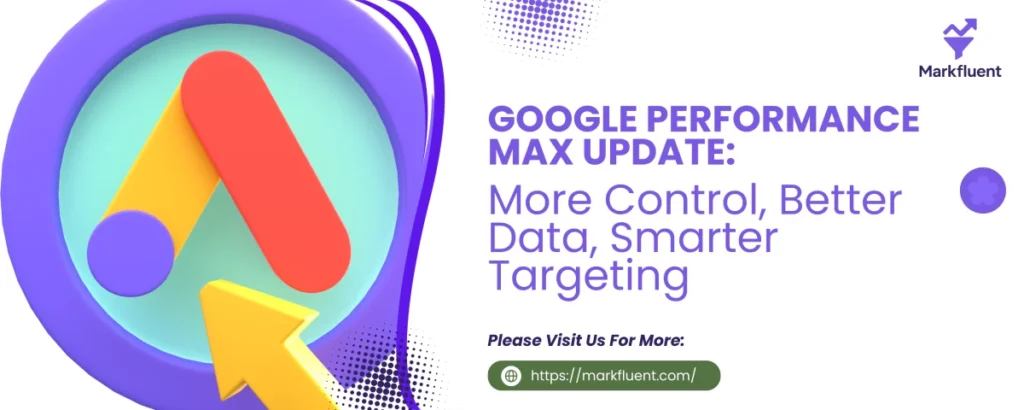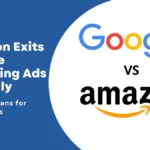Google’s latest Performance Max (PMax) update is one of the most advertiser-friendly changes we’ve seen in months.
It’s not just cosmetic — we’re talking real control, better targeting, clearer data, and smarter creative visibility.
If you’ve been running PMax campaigns, you know the frustration: a “black box” approach that forces you to trust Google’s automation without much insight into what’s really working.
This update? A step closer to cracking that box open.
At a Glance: Key Performance Max Updates
| Feature Update | What Changed | Why It Matters |
| Campaign-Level Negative Keyword Lists | Apply brand safety filters across multiple campaigns at once | Saves time, ensures brand protection at scale |
| Search Theme Limit Increase | From 25 → 50 per asset group | Match more intent-rich queries |
| Demographic Exclusions | Age exclusions live, gender exclusions in beta | Avoid wasted spend on irrelevant segments |
| Device Targeting | Fully available for PMax | Prioritize high-performing device types |
| New Customer Reporting | Fewer “Unknown” conversions | More accurate acquisition insights |
| Goal Diagnostics | Flags broken tags/mismatched goals | Troubleshoot faster, avoid conversion loss |
| Asset-Level Reporting | Clicks, conversions, spend per asset | Identify and double down on top performers |
| Final URL Expansion Asset Visibility | View & remove assets created automatically | More control over live creatives |
| Creative Recommendations | AI-powered suggestions & edits | Improve creatives with minimal effort |
Breaking Down the Changes
1. Sharper Targeting & Control
- Campaign-Level Negative Keyword Lists are finally here. If you’ve been manually adding negatives to each PMax campaign, this is a huge time saver. It’s also the most scalable way to maintain brand suitability.
- Search Theme Expansion — doubling the limit from 25 to 50 gives you room to target niche queries without sacrificing coverage.
- Demographic Controls — age exclusions are live; gender exclusions in beta. Finally, no more wasting impressions on irrelevant audience segments.
- Device Targeting is now a first-class citizen in PMax. If mobile brings in 80% of your conversions, you can now focus budget accordingly.
2. Smarter Acquisition & Diagnostics
- More Accurate New Customer Reporting means fewer “Unknown” tags. This is critical as customer acquisition costs keep rising; identifying true new buyers gives you an edge.
- Goal Diagnostics will now warn you if a tag is broken, a goal isn’t firing, or your setup is mismatched. For advertisers who don’t live inside Google Ads daily, this is a safety net that can save thousands in wasted spend.
3. Creative Control & Visibility
- Asset-Level Performance Data is a game-changer. You can now see exactly which headlines, images, or videos are driving clicks and conversions — and which are dead weight.
- Final URL Expansion Visibility – Ever had Google create assets for you without asking? You can now see and remove them.
- AI-Powered Creative Recommendations – image suggestions, easy edits, and direct integration with Google’s image editor. This means faster turnaround and better alignment with platform best practices.
Why This Update Matters
Many Google Ads updates sound exciting on paper, but do little for day-to-day campaign management. This one’s different:
- Less Guesswork: Direct asset performance data removes a layer of blind trust in automation.
- Better Budget Efficiency: Targeting and exclusions mean money goes where it works best.
- Faster Troubleshooting: Diagnostics reduce downtime and prevent wasted spend.
- Higher Creative Impact: AI recommendations + visibility = more relevant ads, faster.
For advertisers chasing ROAS and CPA goals, these changes can directly improve both.
The Competitive Edge
If you’re in an industry with rising acquisition costs (and that’s most industries right now), the new customer reporting improvements alone are worth exploring. Knowing exactly how many first-time buyers you’re acquiring helps you justify spending and shift budget with confidence.
Combine that with device targeting plus demographic exclusions, and you’re trimming away inefficient impressions, a move that competitors still flying blind might not be making yet.
Bottom Line
Google is slowly dismantling the “black box” of Performance Max. While it’s still heavily automated, advertisers now have:
- More control over where ads show and to whom
- Better data to inform creative and targeting decisions
- Tools to fix issues before they sink performance
If you run PMax campaigns, update your settings, implement new exclusions, check your diagnostics, and start measuring creative performance at the asset level. These are changes worth acting on now, before your competitors catch up.

